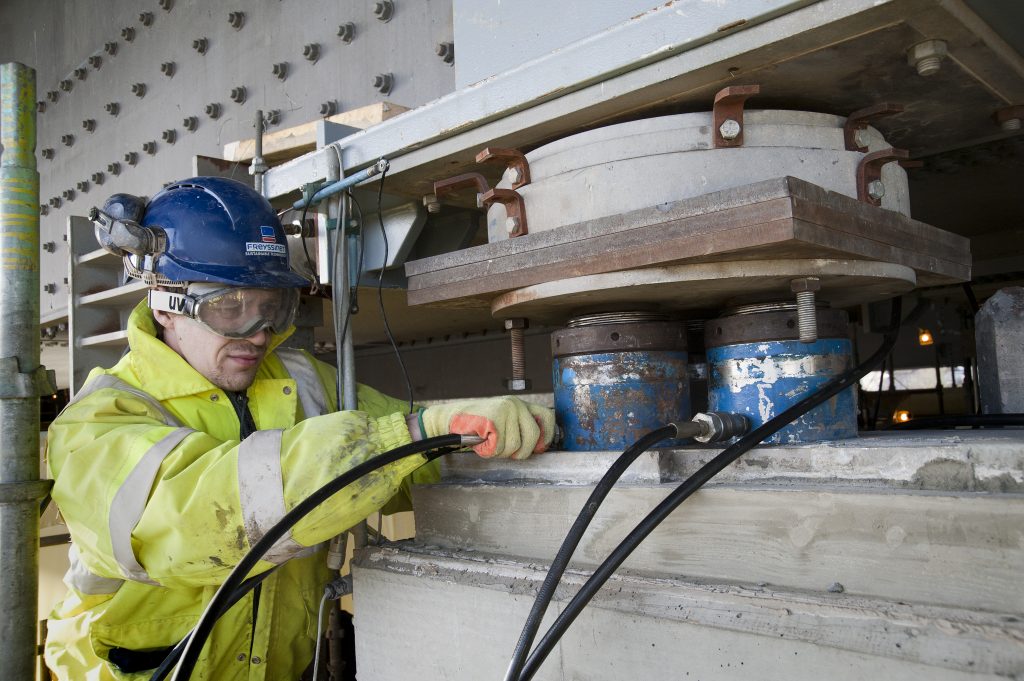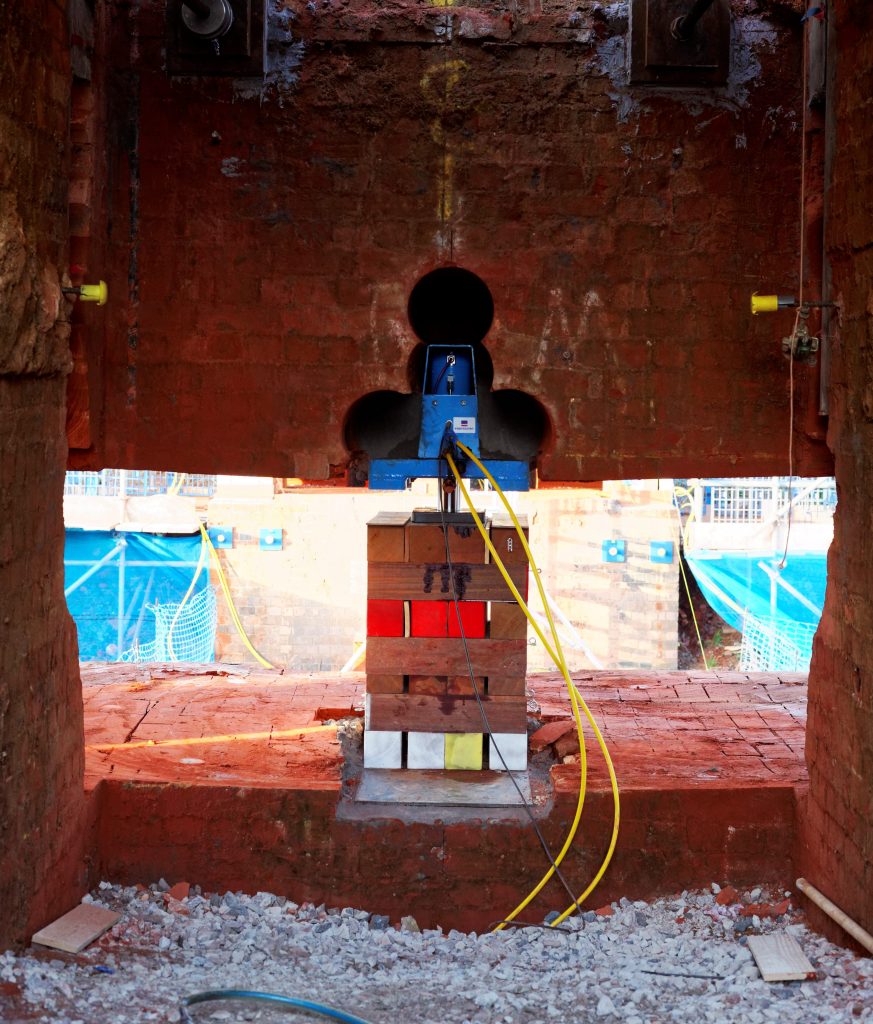Jacking is an application used to overcome problems in both new construction and existing structures and buildings. Often an essential element of works involving load transfer or pre-stressing, bridge lifting and sliding, bearing replacement or high strength bar tensioning, the need to temporarily jack a structure can occur when phasing is either ineffective or not possible under time constraints.
Jack types
 Hydraulic jacks
Hydraulic jacks
Conventional hydraulic jacks are available in a range of capacities up to 1000 tonnes. Equipped with a swivel head, they are able to accommodate slight misalignment of the jacking surface and subsequent rotational movement of the structure. A built-in locking collar allows the hydraulic system to be removed once pressurisation is complete and secures the jack against unforeseen movement and interference.
In instances of bridge bearing replacement, Freyssinet design and manufacture PTFE and elastomer sliding surfaces, which give the jack head the ability to accommodate limited vertical and horizontal structural movement, e.g. to allow bridge deck jacking under live traffic.
Flat jacks
Flat jacks are also available in a range of capacities up to 1000 tonnes and can be used in both temporary and permanent situations.
A flat jack is consists of two steel plates joined at a rim. When inflated, the upper and lower plates are forced apart and can exert forces up to 15 N/mm2. Flat jacks are uniquely able to operate in locations where the gap available for jacking is 50mm or less.
In temporary situations, where jack removal is required, inflation is by hydraulic oil. In situations where a permanent jack installation is required, such as bearing pre-loading or structural lifting, the jack can either be inflated from the outset with epoxy resin, or initially inflated with hydraulic oil and then transfused under load with epoxy resin at a later date.
Considerations
There are several factors which should be considered before jacking can take place. Issues that may be encountered include:
- Bearings suffering from the advanced stages of corrosion, which can affect fixity
- The likely failure mode of the structure
- Current bearing articulation compared to original design
- Deck movement relative to supports
- Monitoring
- The appropriateness of current design
Other factors to consider include the traffic management layout, traffic management costs, the method of replacement, stability issues and fixed point identification.
As a specialist in the design, supply and operation of jacking systems, Freyssinet’s in-house designers are able to engineer bespoke solutions, which combined with our practical experience, can provide the client with considerable advantages in terms of time, cost and access.
Bridge jacking – what we consider
Scope – We investigate the possibility of improving the jacking scheme to reduce cost/disruption to the site.
Initial deliverable – Outline the concept for the jacking of the deck from pier heads and cross beams.
Other critical notes
- Is single lane running too costly?
- Has HB loading (loading from a single abnormal vehicle) been given consideration?
- Has night and weekend working on a pier by pier basis been considered?
With extensive experience in the application of both temporary and permanent jacking, Freyssinet’s designers and engineers assess all aspects of a project, from the location to any health and safety concerns, before developing an innovative, bespoke solution which offers the best results for the client and the structure.
Applications and services
Freyssinet is able to provide quality, safe and innovative solutions. Our jacking services include:
- Flat jacks – temporary and permanent
- Pre-stressing and post-tensioning
- Temporary propping systems
- Bridge bearing replacement
- Hydraulic jacking
- Bridge jacking
- Structure sliding and lifting
Call 01952 201901 or email info@freyssinet.co.uk for more information.

